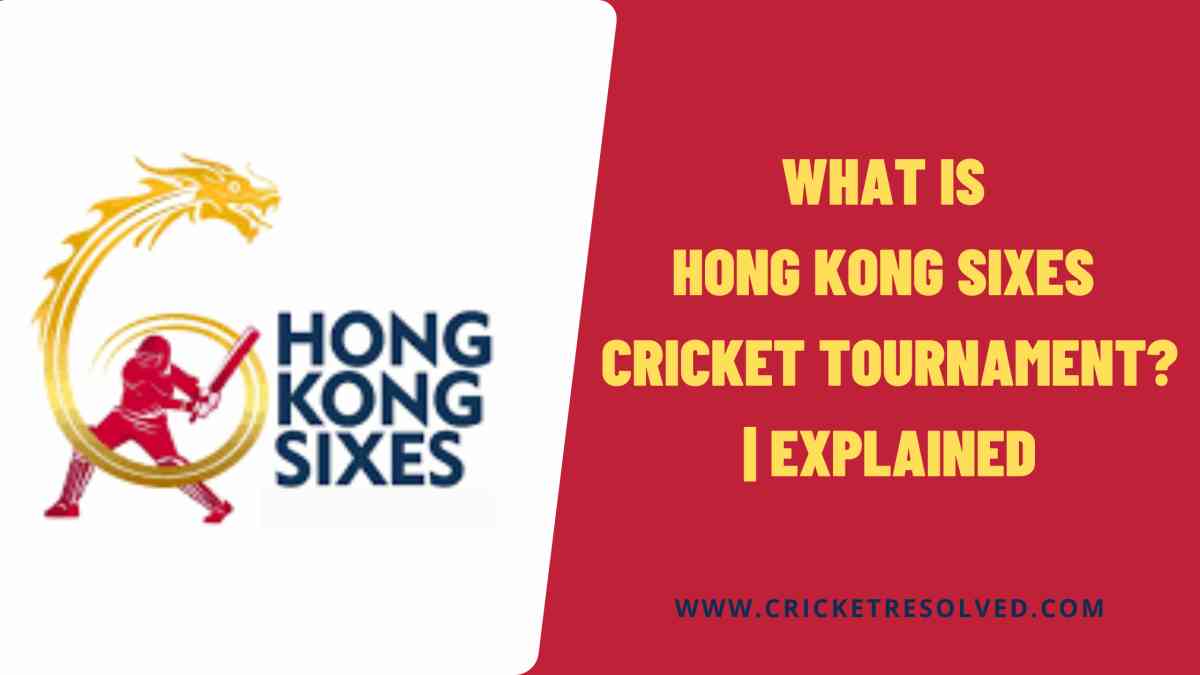
Since the second half of the 20th century, cricket has gone through a lot of revolutions, coming up with a new format now and then.
We have witnessed the rise of ODI and T20 formats, along with some tweaks in them to give us T10 and 100-ball cricket.
But there’s one more format that’s even shorter than the above-mentioned formats. Which format, you ask?
It’s the Hong Kong Sixes Cricket.
In this piece, let’s get to know the Hong Kong Sixes cricket tournament and its rules.
Hong Kong Sixes Cricket Tournament
Cricket Hong Kong, the region’s governing body, started the Sixes cricket tournament in 1993. It’s a short and fast-paced format — shorter than the T10 format!
The tournament sees the participation of international teams along with Hong Kong. Many Test-playing nations, like India, England, and Australia, have sent their teams to participate in the Hong Kong Sixes.
England were the inaugural champions in 1993. And they are the most successful team in the competition, along with South Africa. Both teams have clinched the title 5 times.
Pakistan have won the Hong Kong Sixes 4 times, while Australia, India, Sri Lanka, and the West Indies have lifted the trophy once each.
In the past, many renowned players like Sachin Tendulkar, MS Dhoni, Anil Kumble, Shane Warne, Wasim Akram, Shoaib Malik, Glenn Maxwell, Josh Hazlewood, and Sanath Jayasuriya have turned up for their respective teams in the tournament.
Now let’s look at the interesting rules of the Hong Kong Sixes cricket tournament.
Hong Kong Sixes Rules
The rules of this tournament are quite interesting and different from the traditional formats.
Unlike other formats, the Hong Kong Sixes organises matches between teams comprising 6 players each. That’s how the tournament derives its name — the Sixes.
During a game, each team gets to bat and bowl for 6 overs. So an innings consists of 6 overs of 6 balls each, with the game lasting for 12 overs and a maximum of 60 minutes. However, in the final match of the tournament, an over consists of 8 balls.
But here things get even more interesting.
Every team can field 6 players in a match, including a designated wicketkeeper. Except for the wicketkeeper, the other 5 players have to deliver at least 1 over, with one of them bowling 2 overs.
But when it comes to batting, all 6 players can bat. And the batting innings ends when 5 overs have been bowled or all 6 batters are dismissed.
Wait, so the inning doesn’t end after the fall of the 5th wicket?
No. Even if the 5th wicket falls before the 5 overs are bowled, the last not out batter can bat further.
That means the tournament applies the last man standing rule. Here the last remaining batter can bat until his dismissal, with a dismissed batter acting as a runner on the other end.
The last man needs to face every delivery. And he will be given out if the runner gets run out or out obstructing the field.
All standard dismissal rules are applied in the games. But every wide and no ball adds 1 run to the batting team’s count, along with an extra delivery.
Plus, to make it more exciting, when a batter scores his individual 50 runs, they are forced to retire not out. But here’s a twist.
The retired batter can bat again given all other batters have been dismissed or forced to retire. Isn’t it intriguing? This makes for a power-hitting spectacle in just 6 overs.
Read Next | The Powerplay Overs Rule in T20I Cricket



Leave a Reply